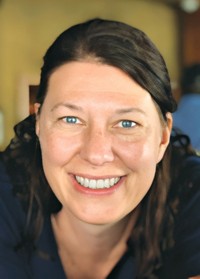Advertisement
Grab your lab coat. Let's get started
Welcome!
Welcome!
Create an account below to get 6 C&EN articles per month, receive newsletters and more - all free.
It seems this is your first time logging in online. Please enter the following information to continue.
As an ACS member you automatically get access to this site. All we need is few more details to create your reading experience.
Not you? Sign in with a different account.
Not you? Sign in with a different account.
ERROR 1
ERROR 1
ERROR 2
ERROR 2
ERROR 2
ERROR 2
ERROR 2
Password and Confirm password must match.
If you have an ACS member number, please enter it here so we can link this account to your membership. (optional)
ERROR 2
ACS values your privacy. By submitting your information, you are gaining access to C&EN and subscribing to our weekly newsletter. We use the information you provide to make your reading experience better, and we will never sell your data to third party members.
Careers
ACS Guidelines For Teaching High School Chemistry
by Andy Jorgensen, Chair, Society Committee On Education
March 25, 2013
| A version of this story appeared in
Volume 91, Issue 12

Fostering the development of the most innovative, relevant, and effective chemistry education in the world is an important goal in the American Chemical Society’s Strategic Plan for 2013 & Beyond. The Society Committee on Education (SOCED) is charged with strengthening the science education infrastructure at all educational levels to meet the changing needs of the science community. SOCED fulfills its charge in part by developing and disseminating outward-facing reports, recommendations, and policy.
In the spring of 2012, SOCED released “ACS Guidelines and Recommendations for the Teaching of High School Chemistry,” a publication it had last revised in 1984. The document provides guidance on teaching high school chemistry to all students. It recognizes the professional integrity of chemistry educators who are devoted to sharing and upholding best teaching practices and providing optimal facilities to achieve excellence.
The goals of the revision are to reflect changes in pedagogy, assessment, and technology; offer recommendations for improving the environment for teaching and learning by all students; and gain broad acceptance within the high school chemistry teaching community. Throughout the writing process, the SOCED-appointed team sought and incorporated feedback from a variety of constituencies: high school teachers and administrators; faculty at two- and four-year postsecondary institutions; and select ACS committees, task forces, and working groups.
Divided into three segments, the document addresses areas critical for consideration in any high school chemistry program.
The “Pathways to Learning” section provides guidance on expected student outcomes, the big ideas that should be explored in a high school chemistry course, and effective student-centered strategies for optimal engagement and learning. Recognizing that one size does not fit all, this segment also provides recommendations for teaching students of diverse backgrounds and various levels of academic ability. It explores other topics including assessment, the role of technology, and the laboratory experience.
The “Physical Plant” section of the guidelines includes recommendations for creating a safe and dynamic learning environment that is student-centered and curriculum-driven. The segment explores classroom features, such as the laboratory, teacher work spaces, and chemical storage facilities. Important considerations include safety equipment, laboratory equipment, room arrangement, and technology. This section of the document strongly recommends the development of a comprehensive and responsible chemical management program by teachers and administrators together.
Finally, the document speaks to the “Professional Preparations and Responsibilities” of high school chemistry teachers. It identifies strategies enabling teachers to create teaching and learning environments that promote equal opportunities for all students to learn chemistry. This segment discusses the ethical considerations, such as ensuring a safe and productive classroom along with an unbiased presentation of content, that exist at the intersection of science and teaching. Recognizing that teaching is a complex and intellectually challenging profession, this section also addresses the importance and characteristics of effective professional development. And it lists examples of professional organizations and resources that support professional development.
The guidelines have been disseminated broadly through distribution channels including networks of high school chemistry teachers; Listservs; and numerous local, state, and national conferences. Additionally, members and staff of ACS have directly contacted more than 6,000 school district science supervisors across the U.S. with information about this important document. Symposia and presentations have been held at conferences including the fall 2012 ACS national meeting in Philadelphia; the 2012 Biennial Conference on Chemical Education at Pennsylvania State University; and the 2012 National Science Teachers Association Area Conferences in Atlanta, Louisville, and Phoenix. These facilitated sessions have provided the opportunity to raise awareness of the guidelines and collect important feedback that will inform supplements and future revisions of the document. Additional symposia and presentations are slated for 2013.
Members of the high school teaching community have provided positive feedback on the guidelines. Many have emphasized the importance of the document in advocating for the continuation and support of chemistry programs at their institutions. Others have noted the usefulness of the guidelines in informing administrators about best practices in chemistry instruction, particularly as they pertain to the laboratory setting.
We hope that the entire ACS membership will join us in broadly disseminating the guidelines to high school chemistry teachers in their communities. You can visit www.acs.org/hsguidelines to view the full report and download a PDF of the document. Please send e-mail requests for hard copies to education@acs.org.
Views expressed on this page are those of the author and not necessarily those of ACS.





Join the conversation
Contact the reporter
Submit a Letter to the Editor for publication
Engage with us on Twitter